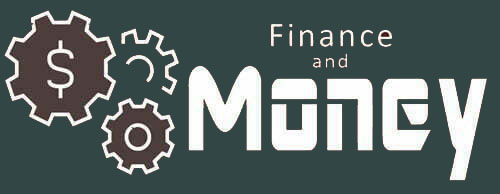Teaching teenagers about money management is a crucial step in preparing them for financial independence. One of the most effective ways to introduce teens to financial literacy is by opening a dedicated bank account that meets their needs. The best accounts offer low or no fees, competitive interest rates, robust educational resources, and parental oversight to ensure responsible financial habits.
With so many options available, it can be difficult to determine the best account for your teen. This article explores the top five bank accounts for teens, focusing on their interest rates, unique features, and parental control options. Additionally, we will provide best practices for opening and managing these accounts, helping parents make informed decisions that set their teens on the path to financial success.
What Makes a Great Teen Bank Account?
When selecting a bank account for a teenager, several key factors come into play. The most important considerations include:
- Interest Rates – A high-yield savings account allows teens to watch their money grow. Accounts with competitive annual percentage yields (APYs) can teach the power of compound interest.
- No or Low Fees – Monthly maintenance fees can erode savings over time, so accounts with minimal costs are more beneficial.
- Parental Controls – Some accounts allow parents to monitor spending, set limits, and guide financial decisions.
- Accessibility – Digital banking features, including mobile apps, online transfers, and ATM access, make managing money easier.
- Educational Tools – Some banks provide financial literacy resources to help teens build smart money habits.
As one financial expert noted, “When selecting the best bank account for kids, prioritize accounts with no monthly maintenance fees or minimum balance requirements”—a sentiment that applies equally to teen accounts.
Top 5 Bank Accounts for Teens
1. BECU Early Saver Account (5.90% APY on first $500)
Why It’s Great: With an incredibly high interest rate of 5.90% APY on balances up to $500, the BECU Early Saver Account is a top contender for any teen looking to maximize their savings. This account stands out because few banks offer such a high yield for youth accounts.
- No monthly maintenance fees
- No minimum balance required
- ATM access with a debit card
- Membership required through select states or employer affiliations
Best For: Teens who want to take advantage of a market-leading interest rate while maintaining accessibility through ATM withdrawals.
2. Bethpage Federal Credit Union Student Savings Account (5.00% APY on first $1,000)
Why It’s Great: This account offers 5.00% APY on the first $1,000, making it one of the best interest-bearing accounts for teenagers.
- No overdraft fees
- Free ATM access
- Mobile check deposits
- Joint ownership with a parent required
Best For: Teens who need both high interest rates and the flexibility to access their money when needed.
3. Spectra Credit Union Brilliant Kids Savings (10.38% APY on first $1,000)
Why It’s Great: Offering an astounding 10.38% APY on the first $1,000, Spectra Credit Union sets a high bar for youth savings accounts.
- No minimum balance required
- No monthly maintenance fees
- Available to those under 18
- ATM card available for ages 13 and up
Best For: Teens who are serious about saving and want to maximize their interest earnings. As financial experts suggest, “Take advantage of compound interest by saving early—small amounts saved consistently can add up significantly.”
4. Alliant Credit Union Kids Savings Account (3.10% APY on balances over $100)
Why It’s Great: With a competitive 3.10% APY on balances above $100, this credit union provides one of the best long-term savings options for teens.
- No monthly fees with e-statements
- $5 minimum opening deposit (covered by Alliant)
- Online and mobile banking access
- Parental joint ownership required
Best For: Teens looking for an account that combines a solid interest rate with digital banking features.
5. Capital One MONEY Teen Checking (2.50% APY on all balances)
Why It’s Great: This is one of the few checking accounts that offer a competitive 2.50% APY on all balances while allowing teens to manage spending and savings together.
- No monthly fees or minimum balance requirements
- Parents can monitor transactions and set spending limits
- Access to over 70,000 fee-free ATMs
- Mobile banking with budgeting tools
Best For: Teens who want the flexibility of a checking account while still having parental oversight.
How to Open a Teen Bank Account
Opening a teen bank account is a straightforward process. Follow these steps to ensure a smooth experience:
- Gather Required Documents – Most banks require:
- The teen’s Social Security number or ITIN
- The teen’s date of birth and contact information
- Parent or guardian’s identification
- An initial deposit, if applicable
- Choose an Account Type – Decide between a checking or savings account based on the teen’s financial needs.
- Apply Online or In-Person – Some banks allow online applications, while others may require a branch visit.
- Set Up Account Access – Ensure online banking, mobile app access, and alerts are enabled for easy management.
- Review the Terms – Understand interest rates, fees, and parental control features before finalizing.
Best Practices for Managing a Teen Bank Account
- Encourage Regular Savings – Set goals for saving money and use automated transfers when available.
- Monitor Transactions – Use parental alerts and review statements together to track spending.
- Teach Budgeting Skills – Help teens allocate money into categories like savings, spending, and charitable giving.
- Reinforce the Power of Interest – Demonstrate how interest compounds over time to incentivize long-term saving.
- Model Responsible Banking – Show teens how to avoid overdrafts and maintain a healthy balance.
As financial advisors emphasize, “The best way to build financial literacy is to start early, with hands-on experience managing an account.”
Final Thoughts
Choosing the right bank account for a teenager is a significant decision that can influence their financial habits for years to come. The best accounts offer competitive interest rates, minimal fees, and strong parental controls. Whether prioritizing savings growth or financial independence, there is a perfect account for every teen. By selecting a top-tier account and teaching best practices, parents can ensure their teens develop smart financial habits that last a lifetime.










